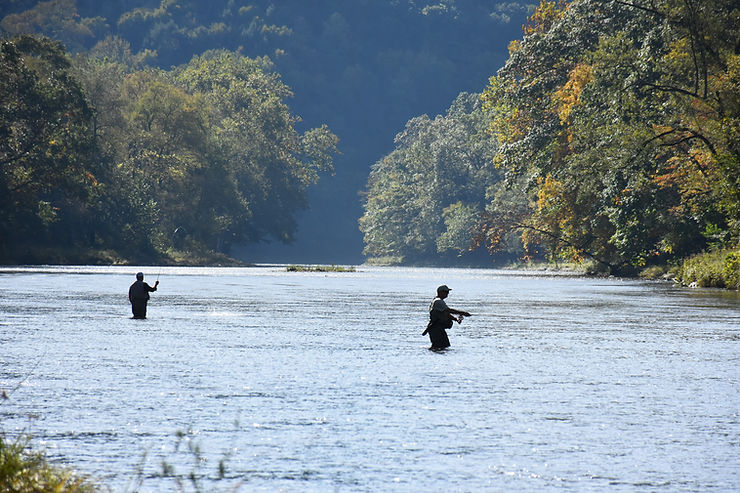Fly Fishing the Oil Creek Region

One of my earliest fishing memories is driving across the bridge in Oil City as caddisflies plastered the windshield. They were everywhere, huge clouds of them high above the water. It was late April and the Grannoms were in full swing on Oil Creek.
With a name like Oil Creek, you wouldn’t expect great hatches or quality fly fishing. In that regard, Oil Creek defies logic. Sure, it has weathered the typical environmental woes and suffered for the sake of “progress.” A look at the area’s history is enough to give pause, and yet, despite that, Oil Creek has emerged as a quality fishery, if not one of the top fishing destinations in Western Pennsylvania.
Black Gold
In August 1859, Colonel Edwin Drake struck oil at a depth of only 69.5 feet, and word of the discovery spread around the world. Those three words – “They’ve struck oil!” – caused thousands of people to flood into the Oil Creek Valley. The scene was so hectic, even the California 49ers claimed the conditions far exceeded the gold rushes of the West Coast.
Boomtowns sprang up throughout the river valley almost overnight. Land was cleared and derricks erected. Roads became impassable due to a mixture of oil and mud. There were accounts of a river covered with oil. In fact, the whole area was so thick with oil you could smell it everywhere you went. It wasn’t just the birth of an industry; it was the birth of an age, one whose effects are felt in everyday life even 160 years later.
The site of the initial discovery, Drake’s Well, became the world’s first commercial oil well, but reserves soon depleted and industry moved on. By 1871, production dwindled as speculators exploited every nook and cranny for those last precious drops of black gold. Boomtowns became ghost towns and nature began the exhausting task of reclamation.
Today, the Oil Creek Valley looks much as it did before the oil rush. Deciduous forests cover the hillsides. Oil Creek again runs clear and fishable. But drive north along PA Route 8 from Franklin to Titusville in the wintertime, when the trees are bare, and old stone walls, gas wells, pumps, and pipelines associated with industry can be seen back in the woods from the highway, like rusted, aging animals sinking into the earth.
Although water quality improved after the oil boom, it took decades for the rocks lining the stream bottom to shed the slick scum left behind. Even now, wading in Oil Creek can be tricky and is best done with a wading staff and boots with studs or lined with felt for extra grip. Oil Creek is rated as a good place for beginners to learn how to kayak and canoe, but like any other big water, it has potential for danger, and that potential increases when its currents are taken for granted.
___________________________________
This is the fourth installment of the stream guidebooks series that features some of Pennsylvania’s best fly fishing destinations. The primary focus of this book is Oil Creek, which is easily one of the best trout streams in Western PA. Little Sandy Creek and Sugar Creek are also covered. In this guidebook, you’ll learn how to access each stream and all of the hatch-matching opportunities each one presents as well as tips and techniques to make your visit to the Oil Creek Region successful. 28 full color pages!

